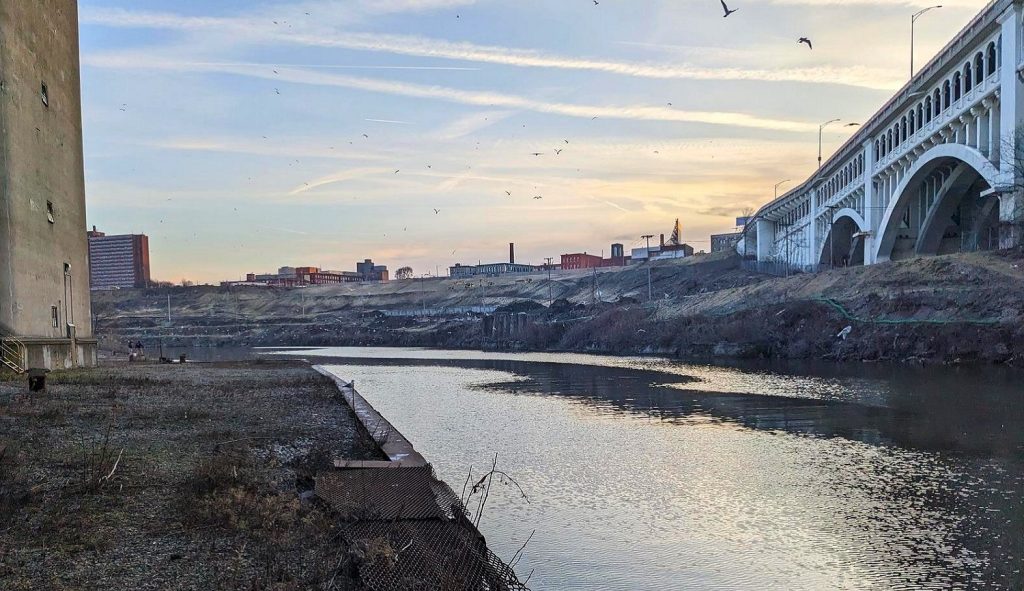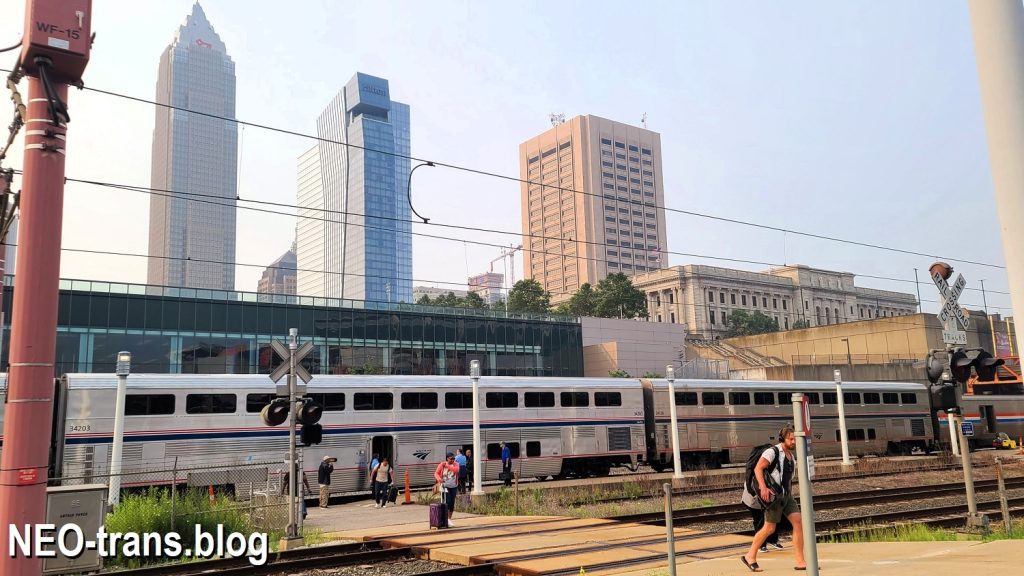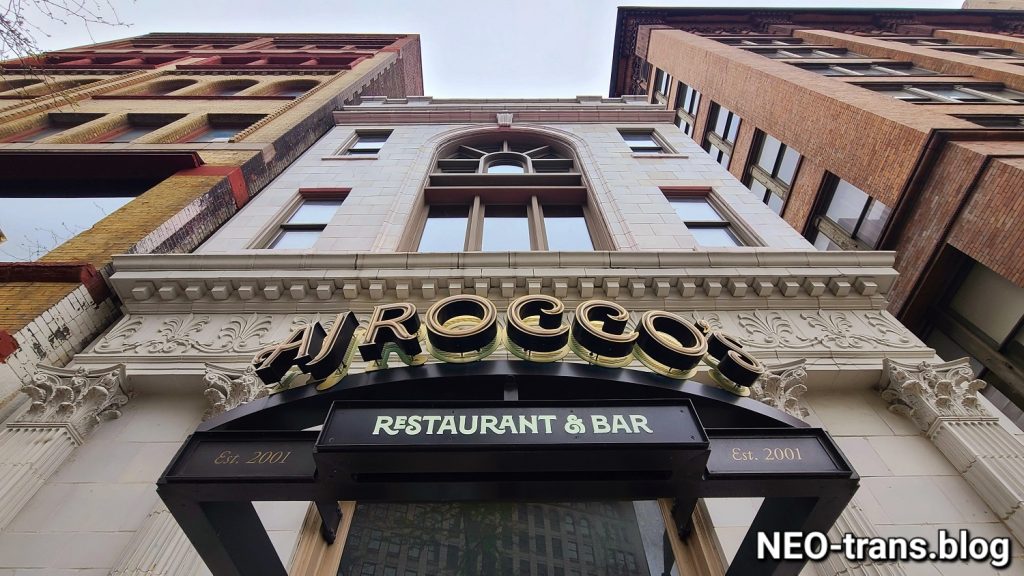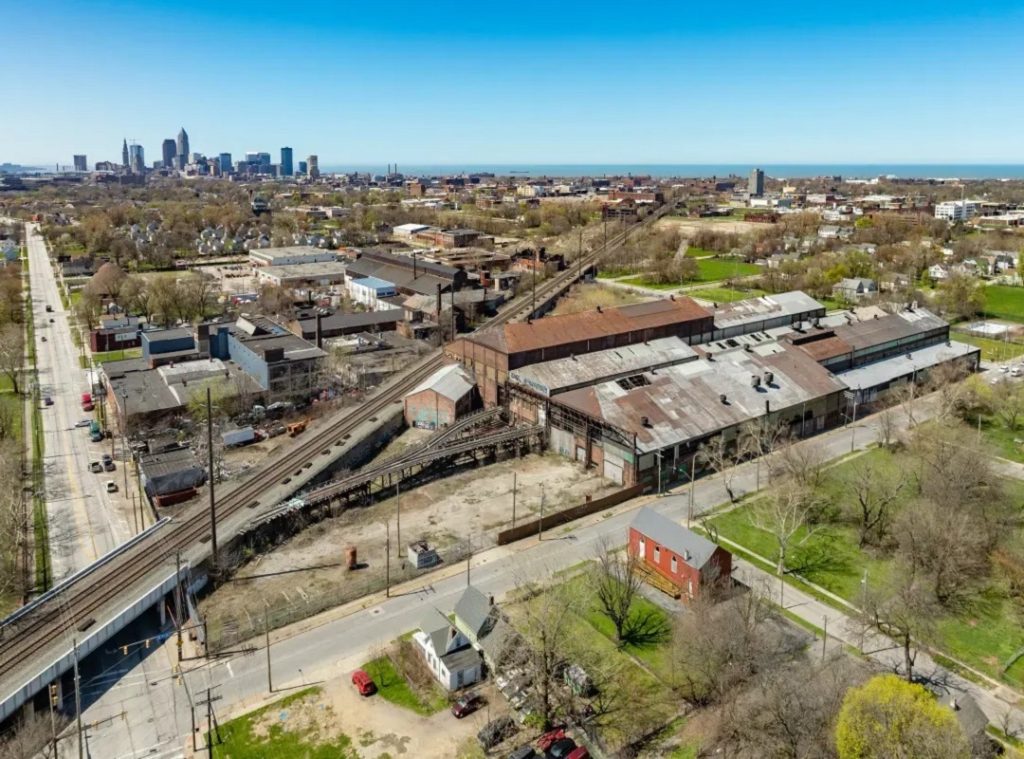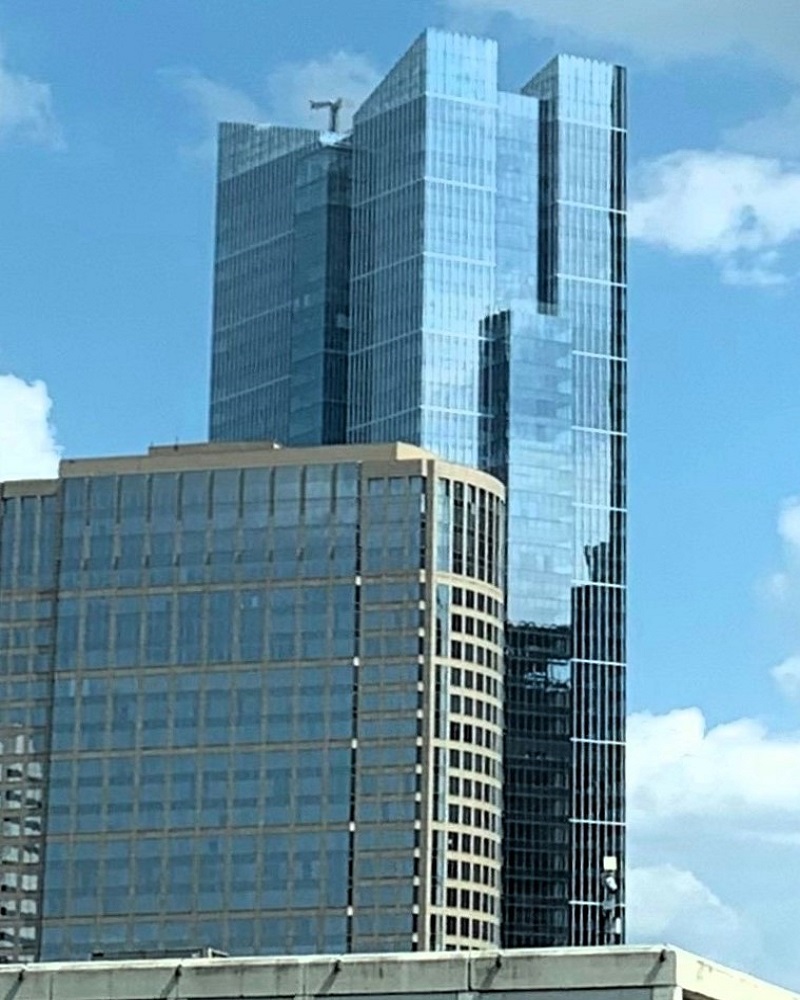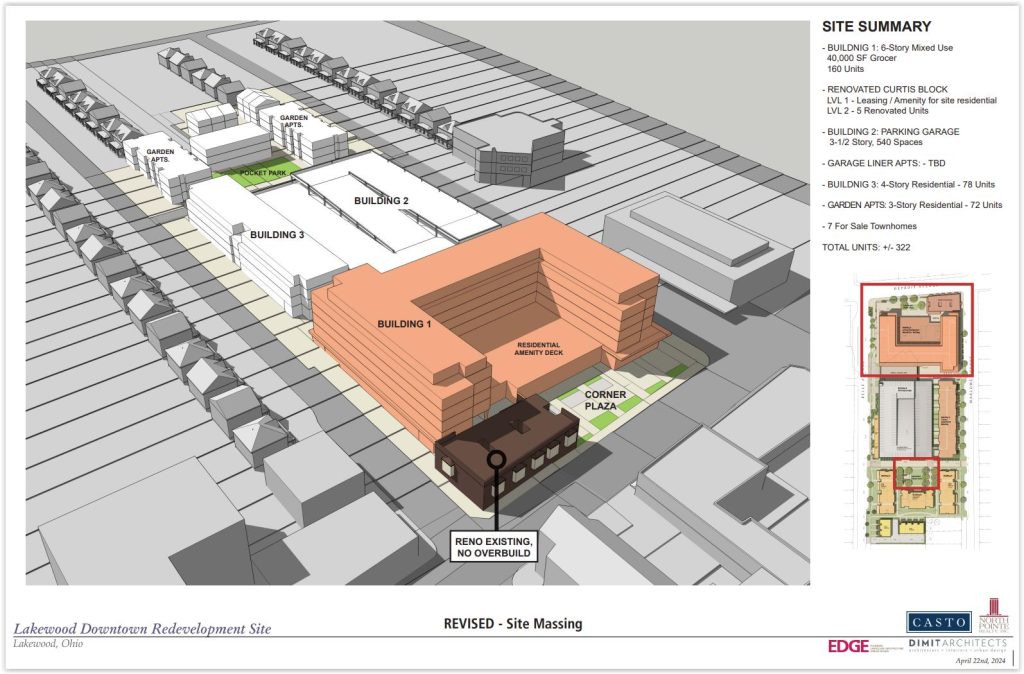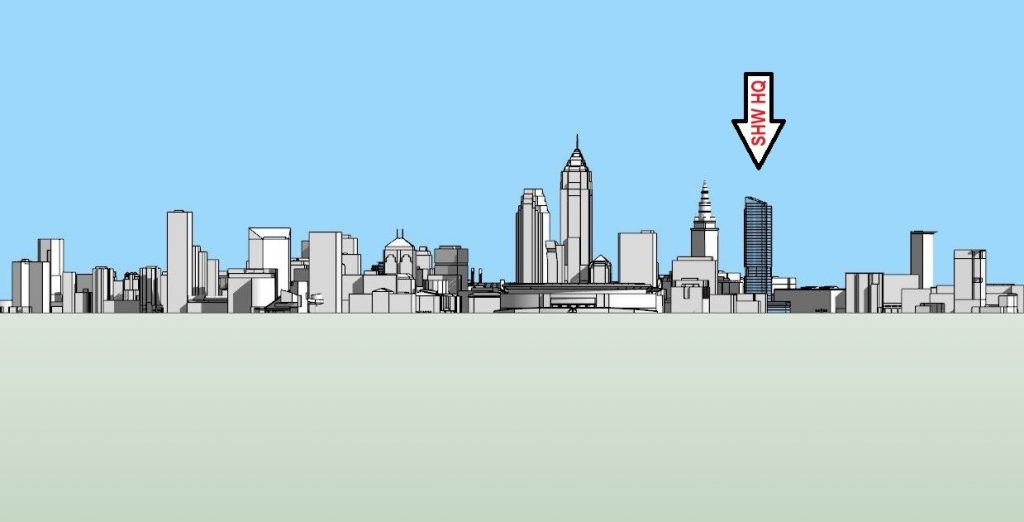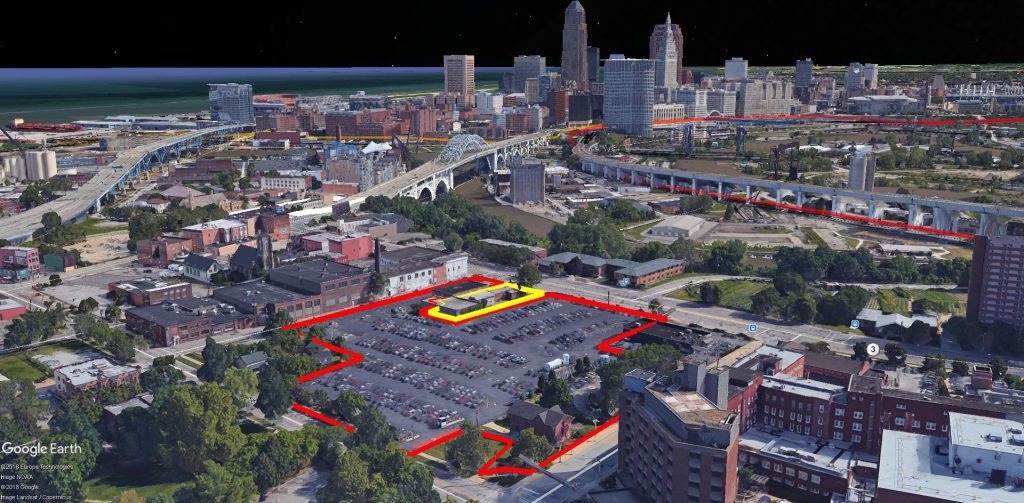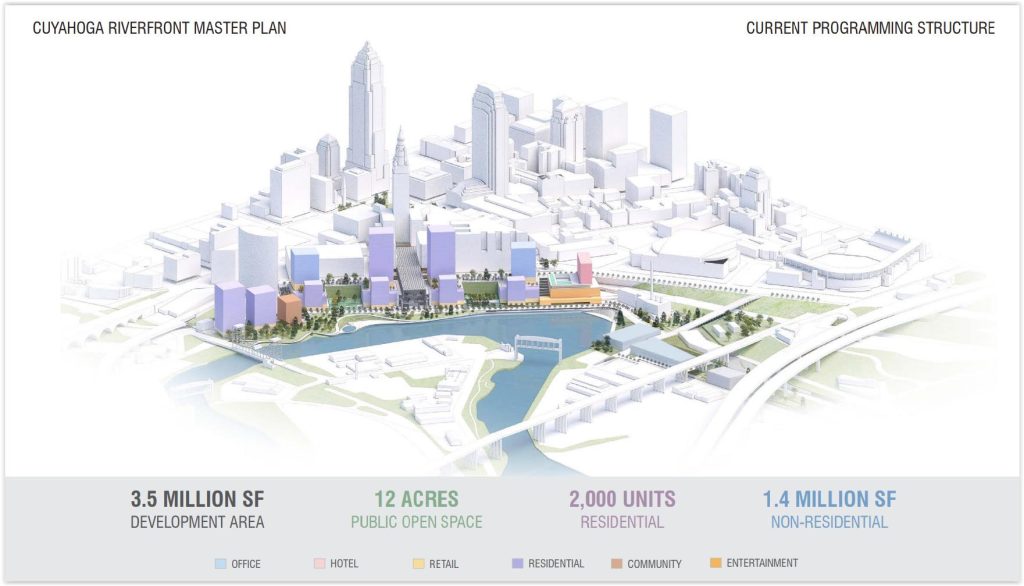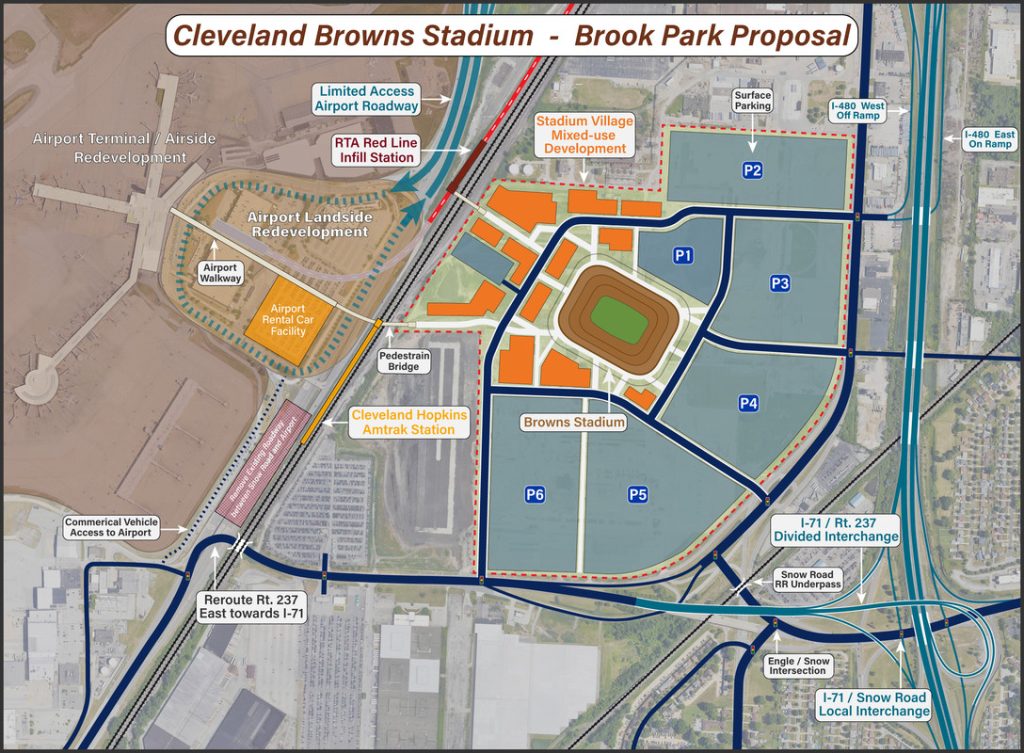
An unofficial site plan for a potential Cleveland Browns Stadium built in suburban Brook Park, showing how a ballpark village between the stadium and Cleveland Hopkins International Airport could be built along with large surface parking lots and transportation infrastructure. A stadium here would not be located below any airport flight paths (Noah Belli). CLICK IMAGES TO ENLARGE THEM.
Browns want roof, control of parking, development

NEOtrans has learned that the Cleveland Browns and their owners, the Haslam Sports Group, want several things from their stadium over the next 30 years that the City of Cleveland appears unwilling to give them. That includes a dome that adds another $1 billion-plus to the stadium’s cost and control over revenues from parking and a ballpark village development.
By contrast, the team seems confident that the neighboring City of Brook Park will yield those things at the 176-acre site of two former Ford plants and next to a third. The site is also next to Cleveland Hopkins International Airport, two interstate highways and at the end of rail rapid transit line. NEOtrans also learned that suburban officials were unaware of the Browns’ plans when NEOtrans broke the story last month that Browns owners had secured a purchase agreement for the property.
A source close to the Browns told NEOtrans that a stadium with a roof is a priority because it makes the venue a year-round facility for a variety of events including the NCAA men’s and women’s basketball tournaments, NCAA football playoffs and other bowl games, gymnastic competitions, international soccer friendlies, and a Super Bowl. Those roof-dependent events tied in with supportive development could make them a cash cow for the Haslams.
Yesterday, owners Jimmy and Dee Haslam met with reporters at the National Football League owners meetings and said they would not consider a domed stadium anywhere in the City of Cleveland including at the Main Post Office site, on the southeast side of downtown. That’s a very telling comment which suggests several things.
First, a domed stadium nearly doubles the cost of a stadium facility. The Browns have proposed a $1.2 billion renovation of the existing, 25-year-old Cleveland Browns Stadium on the downtown lakefront. The cost is proposed to be split 50/50 between the Browns and the public sector, namely the city, Cuyahoga County and State of Ohio. The team’s lease at the city-owned, 67,431-seat stadium expires after the 2028 season.
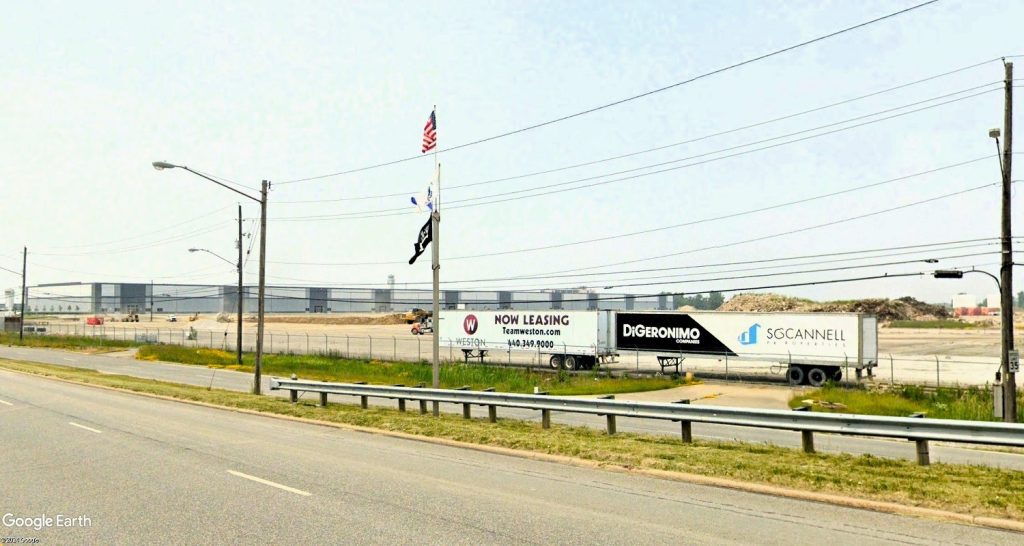
In Brook Park, the Forward Innovation Center-West is a 200-acre redevelopment site of two former Ford auto plants. One part of it was developed with a distribution center, seen in the background. The rest, totaling 176 acres, could be the new site of a Cleveland Browns stadium, parking lots and supportive development (Google).
With a domed stadium, the team would be splitting a much larger tab with the taxpayers, something that city and county officials are concerned about. They have said their job in these negotiations with the football team is to “protect” the city and county. That’s a defensive posture rather than an offensive one — to seek an outcome that can produce more jobs and economic development. It also suggests city and county officials believe the team is trying to take more than to give.
“Keeping the Browns at home on the downtown Cleveland lakefront is a priority for Mayor (Justin) Bibb and city leadership,” said city of Cleveland Chief of Staff Bradford Davy said in a written statement. “The administration has developed a strong, thoughtful and comprehensive package that we believe respects taxpayers and protects the city’s general revenue fund while meeting the needs expressed by the team.”
Half of the 32 NFL teams already play their home games outside of downtown areas — 12 in the suburbs and four more in the “mother city” but away from its central business district. But will the Browns and the Haslams get a better deal in a suburban municipality that is 1/20th the population of Cleveland, and has fewer residents than even downtown Cleveland?
A larger population and city budget may not have anything to do with it. Besides, Brook Park is still in Cuyahoga County whose leaders, like county Executive Chris Ronayne, want a greater contribution of a public dollars from surrounding counties. A recent Scene Magazine article noted that only 15 percent of Browns game attendees reside in the city of Cleveland and 31 percent live in Cuyahoga County.
The public-private funding split may depend on how much control over parking and ballpark village revenues the City of Brook Park is willing to give the Browns and the Haslam Sports Group. If the city is willing to give the Halams most if not all of the control, it may be possible for the Haslams to increase the private-sector share in financing the stadium. The Bibb administration apparently wasn’t willing to yield that much control.
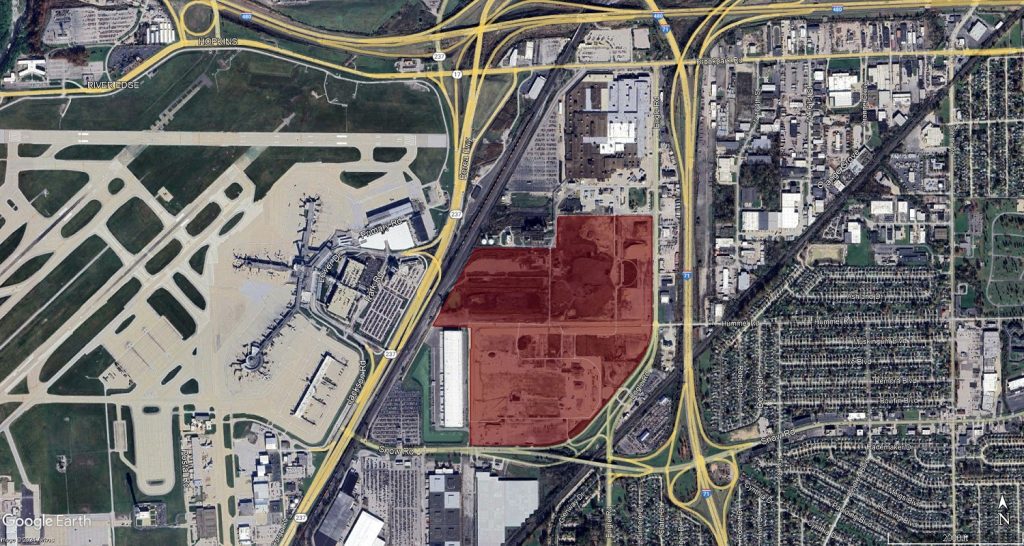
The 176-acre parcel to which the owners of the Cleveland Browns have obtained a purchase agreement is shaded in red. Typically, under such an agreement and over the course of a year or so, a prospective buyer gains access to a property and conducts research into it. It is not known when the purchase agreement was executed (Google).
An email sent by NEOtrans to Cleveland Browns Senior Vice President of Communications Peter John-Baptiste was opened but otherwise not responded to prior to publication of this article. However, he made clear the team’s position in a recent, written statement to the media. He alluded to but did not specifically address whether a stadium roof was a priority.
“One certainty is our commitment to greatly improving our fan experience while also creating a transformative and lasting impact to benefit all of Northeast Ohio,” he said. “We understand the magnitude of opportunity with a stadium project intent on driving more large-scale events to our region and are methodically looking at every possibility.”
“We appreciate the collaborative process with the city of Cleveland and the leadership of Mayor Bibb in analyzing the land bridge and renovating the current stadium,” John-Baptiste added. “At the same time, as part of our comprehensive planning efforts, we are also studying other potential stadium options in Northeast Ohio at various additional sites.”
Next, the cost of parking downtown will also be more expensive. The city’s lakefront masterplan shows replacing and redeveloping the surface parking lots, including the Muny Lot, around the stadium with housing, shops and recreation. That requires consolidating those thousands of parking spaces into massive parking garages that are much more expensive to build and maintain. If the public sector builds them and the Browns get the revenue, that’s probably a no-go for the city.
At Brook Park, the parking can be built and maintained more cheaply as surface lots while offering tailgating. The Haslams could be expected to earn up to $1 million per sellout event at a 60,000- to 70,000-seat seat stadium if they charge the bottom rate league-wide of just $15 per parked vehicle. Then there’s the “ballpark village”-type development surrounding the stadium to which the City of Cleveland has not included in its lakefront plans.
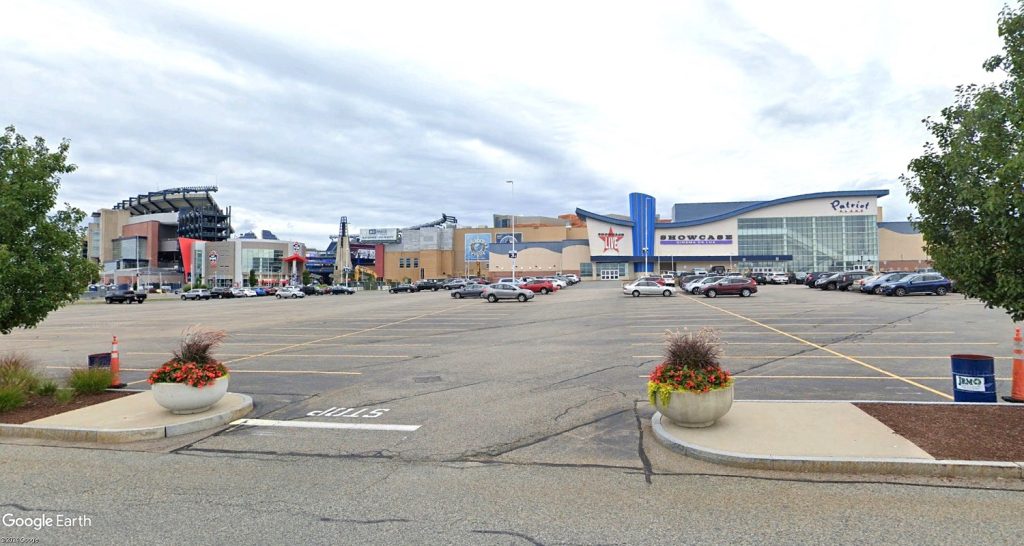
Welcome to Patriot Place lifestyle center in suburban Foxborough, MA, between Boston and Providence. Adjacent to the New England Patriots’ Gillette Stadium, which isn’t a domed stadium, Patriot Place features more than 1.3 million square feet of shopping, dining and entertainment. It might have been even busier if Gillette Stadium was built with a dome (Google).
“If you’re wondering why every American sports team wants to build a mixed-use development around its venue, ‘The Battery’ earned the Atlanta Braves $59 million in revenue last year,” wrote Joe Pompliano, author of a sports business newsletter. “It’s now the team’s third-largest revenue-generating category and growing 10 percent annually. Incredible.”
Revenue from ballpark village-type developments is not subject to NFL revenue-sharing agreements. But is the site across State Route 237 and the railroad tracks, between a still-active Ford automotive plant and a new 360,000-square-foot distribution center, the best spot for a new football stadium and ballpark village?
Not according to Tom Chema who, as executive director of the Gateway Economic Development Corp. led the construction of baseball stadium and basketball/hockey arena in Downtown Cleveland in the early 1990s. He says the 50-acre site of the existing Main Post Office, on the other side of Interstate 90 from Gateway’s Progressive Field, is a better football stadium location.
“It doesn’t make good economic development sense to build a football stadium next to an auto plant and a distribution center,” Chema said. “But if you build a football stadium where the post office is, it extends downtown. I think it makes perfectly good sense to move the post office out to the airport, from a post office point of view and from a land use point of view.”
Ironically, two years ago, the U.S. Postal Service (USPS) began using a 400,000-square-foot building that was part of the much larger General Motors-Chevrolet Transmission Plant, 5520 Chevrolet Blvd., Parma until 2011. The facility is used by USPS as an auxiliary distribution center during peak shipping times like Christmas.
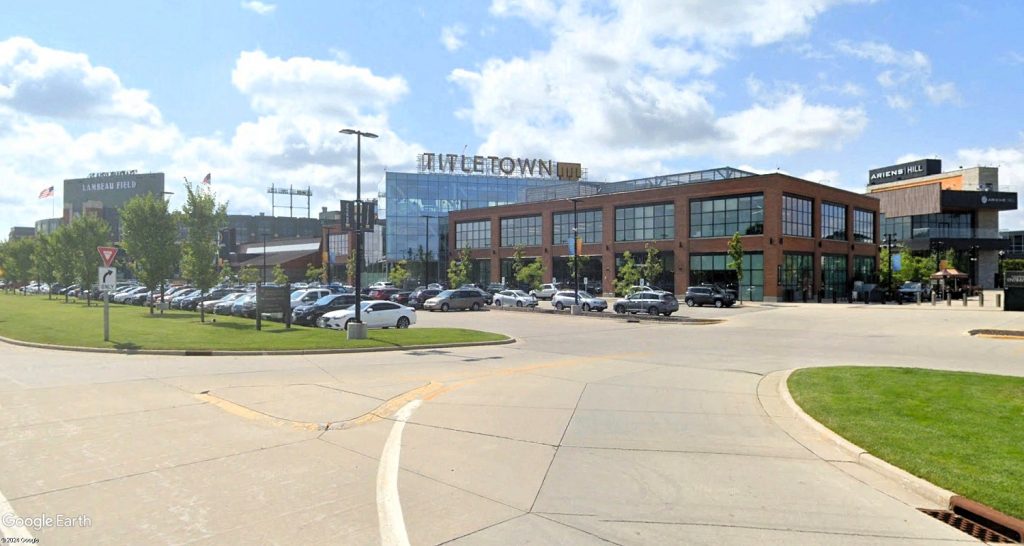
Although Lambeau Field, home of the Green Bay Packers seen in the background, is in the city of Green Bay, the stadium’s ballpark village Titletown in the foreground is in the suburb of Ashwaubenon. Out of sight to the right are hotels, townhomes, apartments and more sports fields. Green Bay is the smallest market in the National Football League (Google).
In 2022, an affiliate of American Postal Infrastructure, based in the Chicago suburb of Oakbrook, bought the Chevrolet Boulevard building for $34 million, according to Cuyahoga County property records. That postal auxiliary facility is just over 2 miles from the potential Brook Park stadium site.
Others note that a ballpark village next to a football stadium built next to the airport could end up competing with a mixed-use development the Browns are planning in Berea. Most recently, affiliates of the Browns and the Haslam Sports Group acquired the former Serpentini Chevrolet car dealership on Front Street. That acquisition brought the combination of city- and team-owned land for the development to nearly 40 acres.
While the Browns’ owners Jimmy and Dee Haslam have been mum on their plans regarding their Berea development, Berea Mayor Cyril Kleem said in his annual State of the City speech, reported in the suburb’s March newsletter, that the team has talked to him about a mixed-use development of properties it has acquired primarily between Pearl and Front streets, south of Lou Groza Boulevard. This land is only 2 miles from the potential stadium site in Brook Park.
The Berea development will reportedly include a new Browns and Haslam Sports Group headquarters office building, the professional football team’s practice facility, hotel, shops, restaurants and community recreation facilities, first reported by NEOtrans.
END

